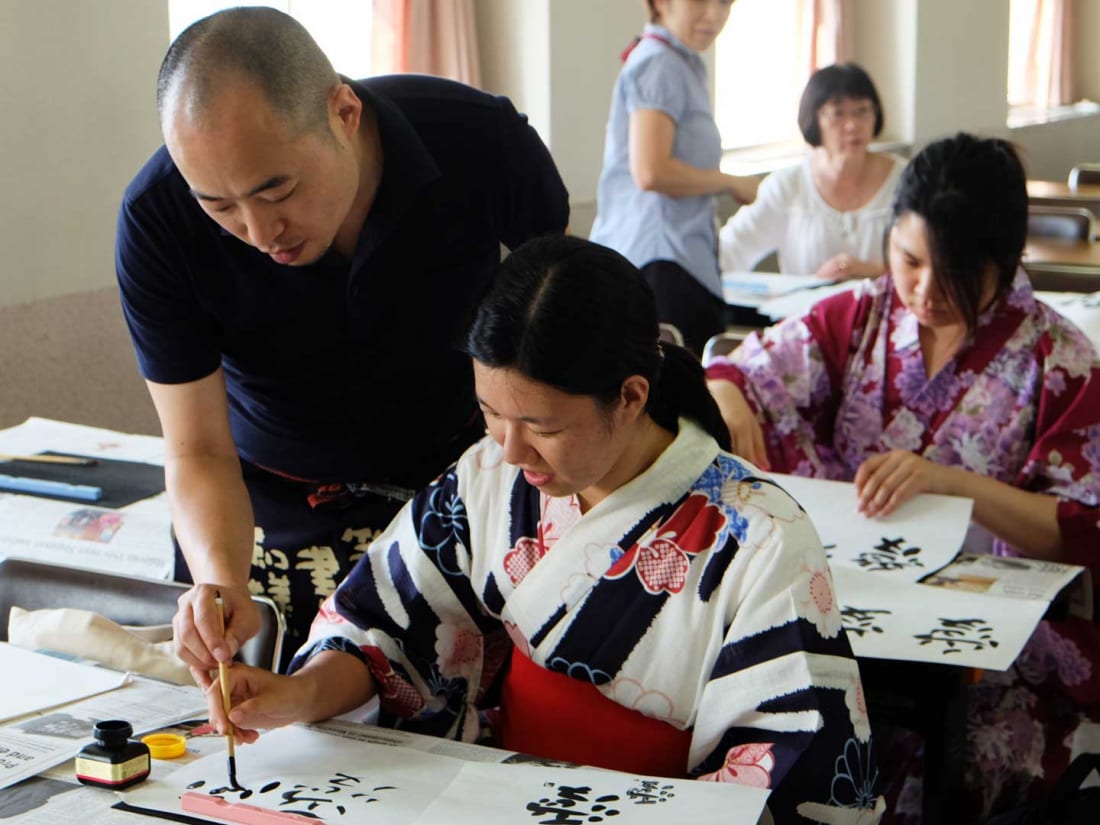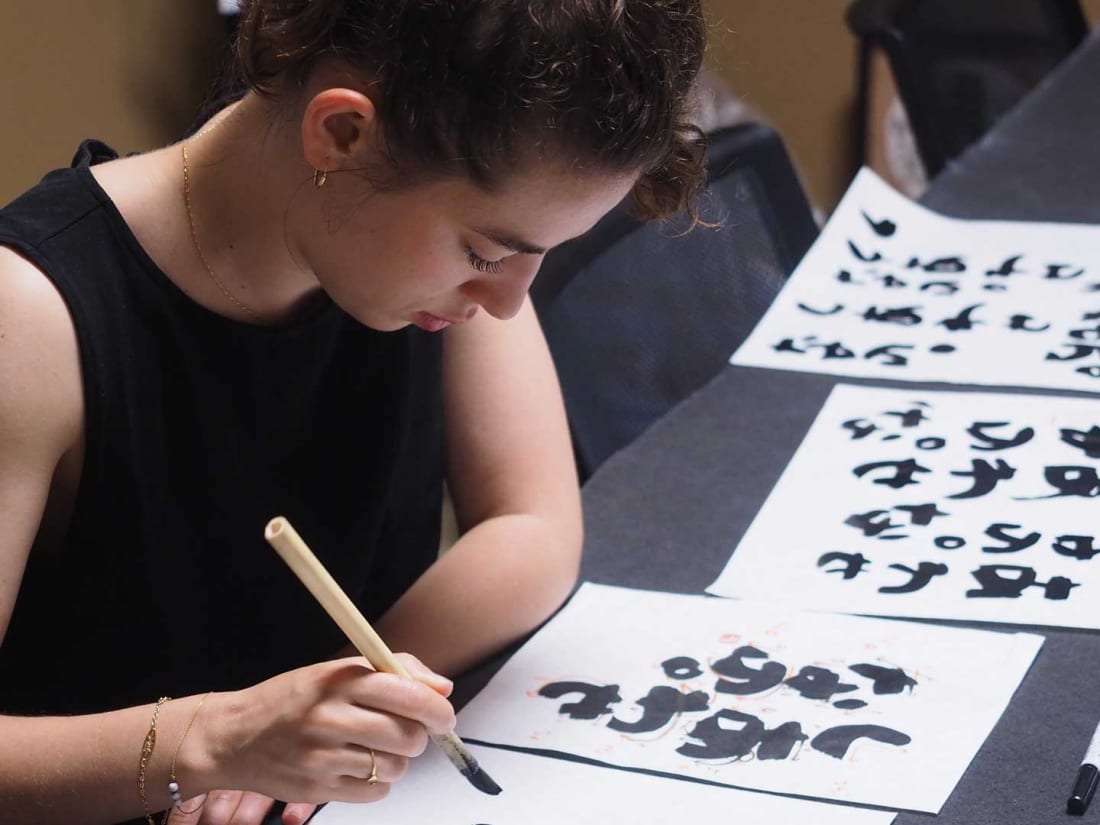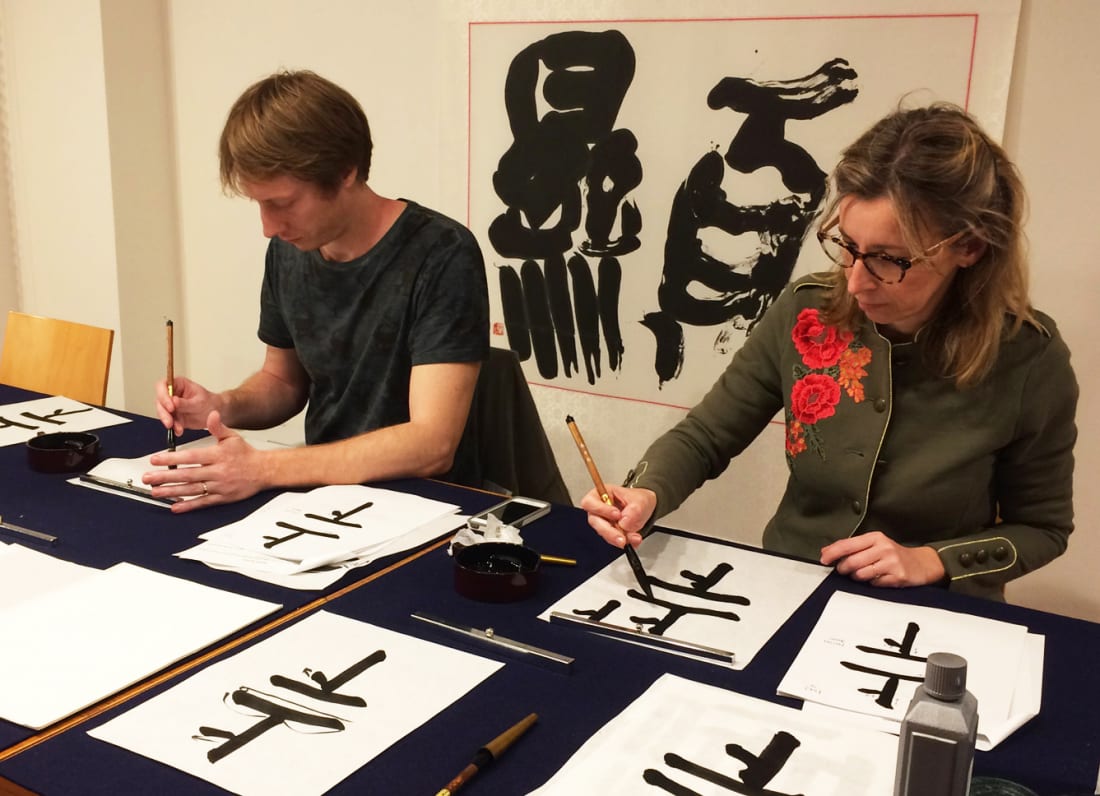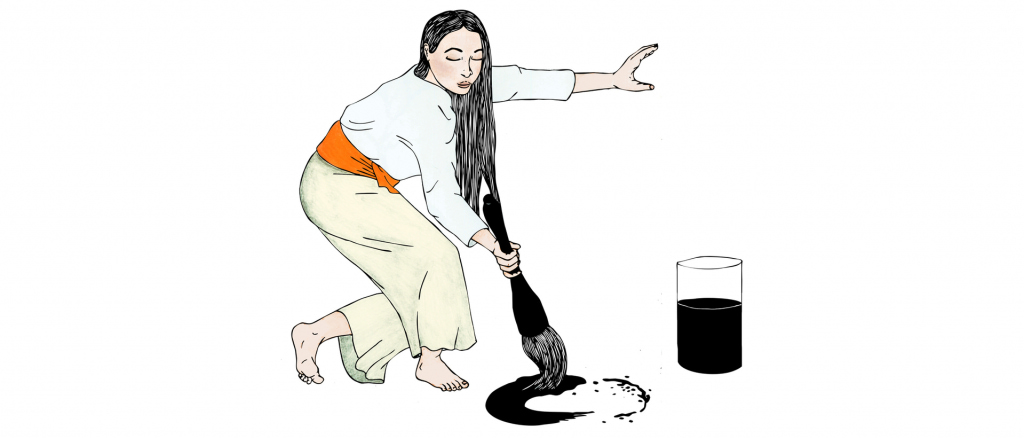Calligraphy brushes, loaded with unforgiving black ink, are hovering nervously over clean white paper in Atsushi Miyazaki’s studio. After a brief introduction to the history of shodo and proper brush technique, it’s now time for the beginner class to make their first marks, starting with a simple vertical line.
As the unnatural feeling of holding a calligraphy brush combines with the intensely black ink, a simple line never felt so complicated. Despite our nerves, calligraphy master Miyazaki and his assistant are there to guide us each step of the way and soon we are writing our names and chosen kanji characters with some degree of confidence.
While it can take many years – or a lifetime – to master shodo, an introductory class allows you to partake in one of Japan’s iconic art forms, and discover an appreciation for both contemporary and historic shodo art.
The history of shodo (Japanese calligraphy) can be traced back to the 6th century when it was first introduced to Japan from China. Since then, shodo has been considered a respected art form and a valuable part of Japanese culture.
Through the traditional use of kanji characters, complex ideas and emotions can be conveyed with just a few symbols. When we think of kanji as expressing meaning rather than words, we appreciate how the handwriting’s emotion has a big impact on our interpretation.

Courtesy of Wayo Udoyoshi
The Basics of Calligraphy
The foundations of shodo consist of three basic writing styles. Kaisho, known as block style, encourages correct composition, technique and execution. This is the basis of the other writing styles and is a natural introduction to shodo.
Next, we have gyosho, or semi-cursive style. This encourages the artist to bring a sense of fluidity to the work. The writing should express movement and freedom that allows the artist to add some creative flair.
Finally, we have sosho, or cursive style. Sosho writing should express so much movement it gives the impression of wind moving through grass. Illegible to most, this is the most difficult style.
The practice of shodo has been defined by the qualities of Japanese calligraphic ink, known as sumi. Sumi is permanent and unforgiving, meaning the final piece exists as a testament to the way in which it was created.
Unintentional marks resulting from nervousness or human error become part of the piece, and it is up to the artist to either accept the imperfections and what they represent or repeat the writing with a clearer mindset.
The more the artist tries to force themselves to create a perfect piece, the more rigid and imperfect it becomes. Because of this, the practice of shodo is believed to be not so much about the final product as it is the process of creation.
So how have shodo’s boundaries been pushed in the modern world?

Courtesy of Wayo Udoyoshi
Zen and the Art of Calligraphy
The irreversibility and honesty of marks made in shodo make it a popular practice for followers of Zen Buddhism, believing shodo is best produced under a Zen mindset that is free from expectation or distraction. By working in a meditative state of mind, the artist is considered to be at one with their creation.
Zen’s influence on shodo is clear in the practice of modern calligraphy, also known as avant-garde calligraphy or zenei shodo. Avant-garde calligraphy steps away from the rules of traditional shodo and focuses on the improvisation of abstract and unconscious thought.
The written content becomes irrelevant and the significance is found in the gestures and purity of the work’s creation. The value of the moment of creation in shodo has encouraged contemporary calligraphers to practice shodo in front of an audience, allowing viewers to witness not just the final product, but also the moment in which it was conceived.

Atsushi Miyazaki Japanese Calligraphy Workshop
Where to Find English-Language Classes
Despite shodo being a written art form, the focus is often on the composition and fluidity of the ink rather than the content, so it is entirely possible to practice shodo without speaking Japanese. If you would like to try your hand at shodo there are plenty of classes in Tokyo welcoming foreign students with and without Japanese language abilities.
Japanese Calligraphy Class, School in Tokyo
For lessons with an award-winning calligrapher in the heart of Tokyo look no further than Atsushi Miyazaki. Miyazaki has studied calligraphy since the age of 10 and worked overseas as a calligraphy instructor in Prague. He warmly welcomes students with and without Japanese language abilities to his studios in Shibuya and Shinjuku.
Find details on our Concierge page.
Udoyoshi Japanese Calligraphy Class
For a unique calligraphy lesson consider Wayo Udoyoshi. Wayo Udoyoshi teaches Shodo in the wayo style – a uniquely Japanese form of calligraphy from the Heian period that developed from the female writing style. Wayo uses hiragana, the Japanese sound-based alphabet, making it a more readable form of writing than using kanji alone.
Find details on our Concierge page.
Brush and Ink (Japanese Calligraphy)
For an intimate lesson complete with tea, cookies and conversation with your teacher, the Brush and Ink AirBnb experience with calligraphy master Tenshin comes highly recommended. Furthermore, all money received goes towards Tenshin’s non-profit organization NPO-LESA which supports children diagnosed with HIV in Vietnam.
Find details on our Concierge page.
Feature illustration by Eleanor Jane Hall








